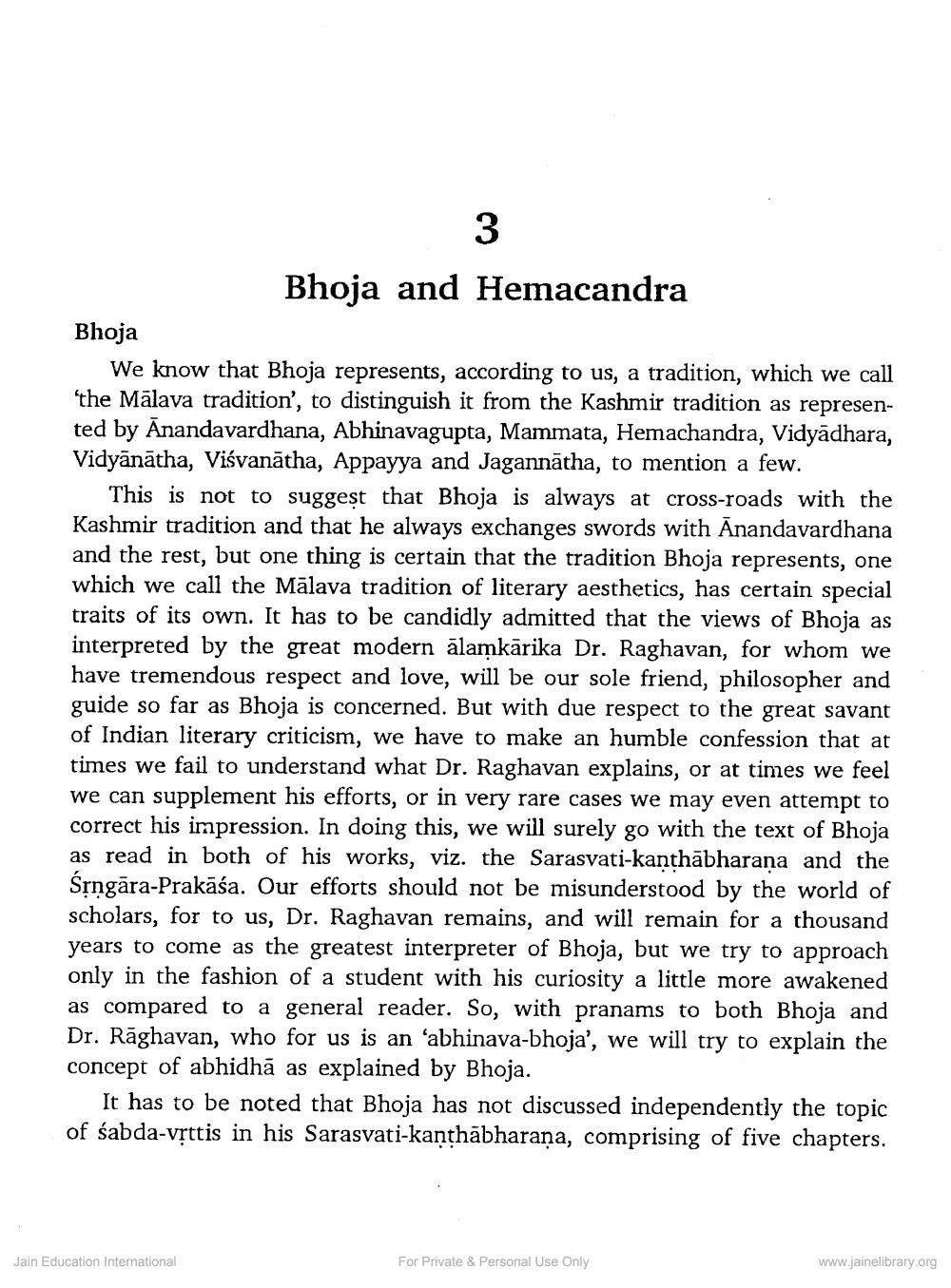________________
Bhoja and Hemacandra Bhoja
We know that Bhoja represents, according to us, a tradition, which we call 'the Mālava tradition', to distinguish it from the Kashmir tradition as represented by Anandavardhana, Abhinavagupta, Mammata, Hemachandra, Vidyadhara, Vidyānātha, Viśvanātha, Appayya and Jagannātha, to mention a few.
This is not to suggest that Bhoja is always at cross-roads with the Kashmir tradition and that he always exchanges swords with Anandavardhana and the rest, but one thing is certain that the tradition Bhoja represents, one which we call the Mālava tradition of literary aesthetics, has certain special traits of its own. It has to be candidly admitted that the views of Bhoja as interpreted by the great modern alamkārika Dr. Raghavan, for whom we have tremendous respect and love, will be our sole friend, philosopher and guide so far as Bhoja is concerned. But with due respect to the great savant of Indian literary criticism, we have to make an humble confession that at times we fail to understand what Dr. Raghavan explains, or at times we feel we can supplement his efforts, or in very rare cases we may even atten correct his impression. In doing this, we will surely go with the text of Bhoja as read in both of his works, viz. the Sarasvati-kanthabharana and the Śrngāra-Prakāśa. Our efforts should not be misunderstood by the world of scholars, for to us, Dr. Raghavan remains, and will remain for a thousand years to come as the greatest interpreter of Bhoja, but we try to approach only in the fashion of a student with his curiosity a little more awakened as compared to a general reader. So, with pranams to both Bhoja and Dr. Rāghavan, who for us is an ‘abhinava-bhoja', we will try to explain the concept of abhidhā as explained by Bhoja.
It has to be noted that Bhoja has not discussed independently the topic of śabda-vrttis in his Sarasvati-kanthābharana, comprising of five chapters.
Jain Education International
For Private & Personal Use Only
www.jainelibrary.org




